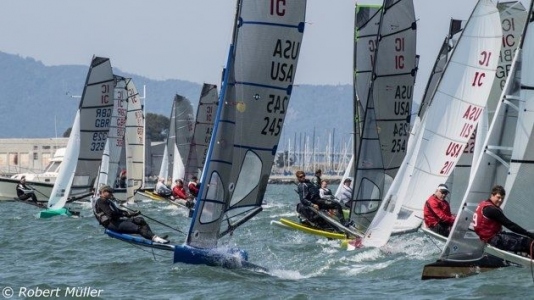What is Canoe Sailing?
History
The origins of canoe sailing go back to John MacGregor in the UK in the 19th century. Initially the sailor sat in the Canoe and used moveable lead ballast, but the Sailing Canoe has developed into a highly technical lightweight carbon fibre high performance sailboat where the sailor hikes over the end of a sliding seat.
The 10 sq m Sailing Canoe
The boats are designed within a box rule with a maximum length of 5.2m, a minimum width of 0.75m, 10 sq m maximum sail area, minimum total sailing weight of 50kg and the distinctive sliding seat that allows the sailor to use their weight over 2m from the centreline to counteract the force of the wind. Whilst challenging to sail, their narrow, easily driven hull also makes them one of the one of the fastest and most rewarding sailing craft.
Racing
International competition began in 1886 with a challenge for the New York Canoe Club International Challenge Cup, which is the oldest international trophy still competed for small sailing craft and the second oldest after the America's Cup. Canoe competition spread from its initial roots in the UK, USA and Sweden to other parts of Europe in the early 20th century and today racing takes place in North America, Europe and Australia.
The first ICF World Championship was in the UK in 1961 and these have been held every three years since. The last was held in 2017 in Pwllheli, UK and won by British sailor Robin Wood. Read the full event report here. The 2020 World Championship will be held at Lake Macquarie, NSW, Australia in December 2020/January 2021.
For further information on canoe sailing see intcanoe.org
Rules
Committee
Phil Robin (GBR) Chairman
Ola Barthelson (SWE) Member
Bob Lewis (CAN) Member
Del Olsen (USA) Member
Arne Stahl (GER) Member
Geoff Carne (AUS) Member



